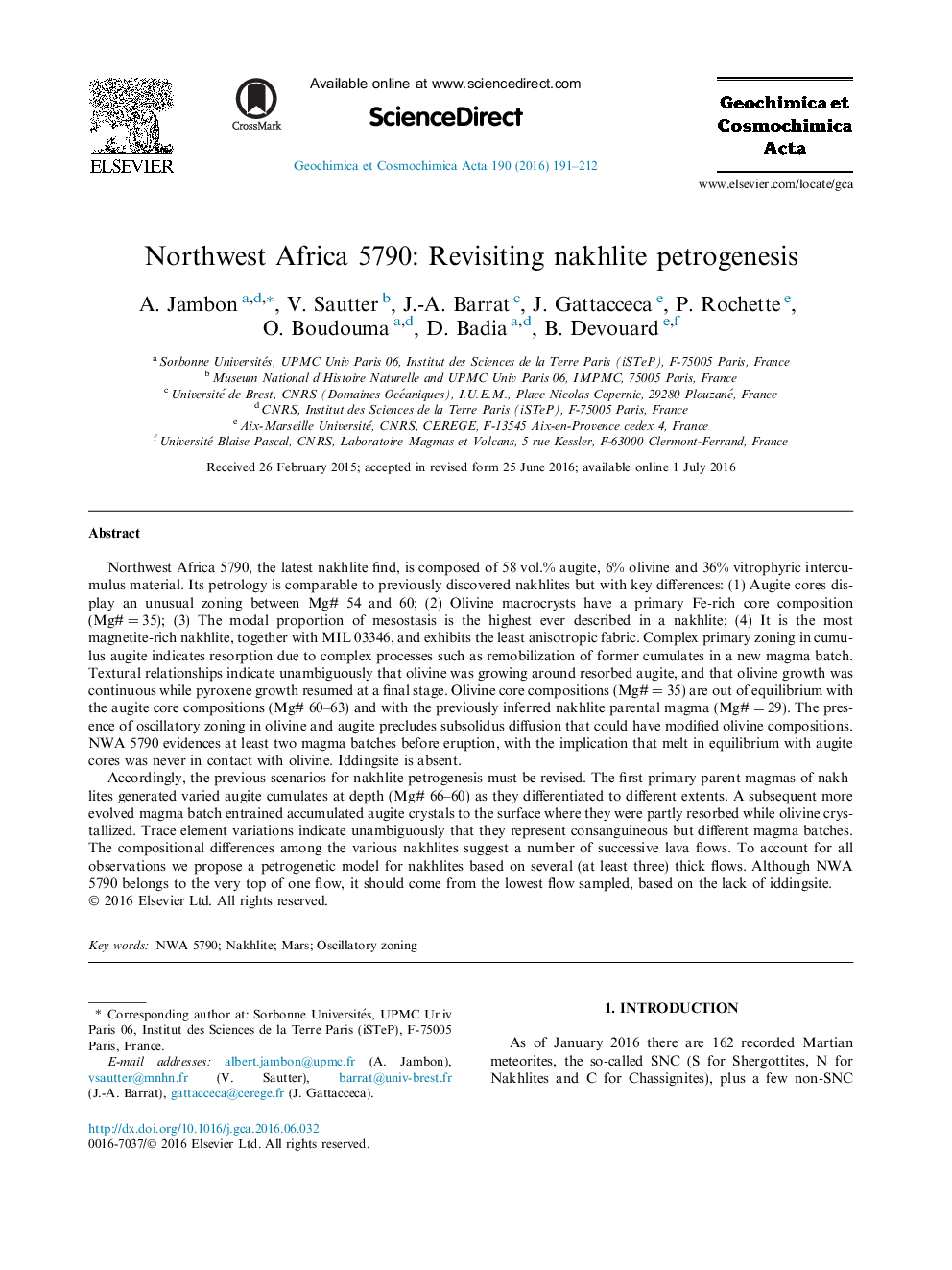| Article ID | Journal | Published Year | Pages | File Type |
|---|---|---|---|---|
| 4701750 | Geochimica et Cosmochimica Acta | 2016 | 22 Pages |
Northwest Africa 5790, the latest nakhlite find, is composed of 58 vol.% augite, 6% olivine and 36% vitrophyric intercumulus material. Its petrology is comparable to previously discovered nakhlites but with key differences: (1) Augite cores display an unusual zoning between Mg# 54 and 60; (2) Olivine macrocrysts have a primary Fe-rich core composition (Mg# = 35); (3) The modal proportion of mesostasis is the highest ever described in a nakhlite; (4) It is the most magnetite-rich nakhlite, together with MIL 03346, and exhibits the least anisotropic fabric. Complex primary zoning in cumulus augite indicates resorption due to complex processes such as remobilization of former cumulates in a new magma batch. Textural relationships indicate unambiguously that olivine was growing around resorbed augite, and that olivine growth was continuous while pyroxene growth resumed at a final stage. Olivine core compositions (Mg# = 35) are out of equilibrium with the augite core compositions (Mg# 60–63) and with the previously inferred nakhlite parental magma (Mg# = 29). The presence of oscillatory zoning in olivine and augite precludes subsolidus diffusion that could have modified olivine compositions. NWA 5790 evidences at least two magma batches before eruption, with the implication that melt in equilibrium with augite cores was never in contact with olivine. Iddingsite is absent.Accordingly, the previous scenarios for nakhlite petrogenesis must be revised. The first primary parent magmas of nakhlites generated varied augite cumulates at depth (Mg# 66–60) as they differentiated to different extents. A subsequent more evolved magma batch entrained accumulated augite crystals to the surface where they were partly resorbed while olivine crystallized. Trace element variations indicate unambiguously that they represent consanguineous but different magma batches. The compositional differences among the various nakhlites suggest a number of successive lava flows. To account for all observations we propose a petrogenetic model for nakhlites based on several (at least three) thick flows. Although NWA 5790 belongs to the very top of one flow, it should come from the lowest flow sampled, based on the lack of iddingsite.
